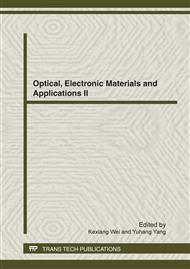p.175
p.180
p.186
p.190
p.195
p.200
p.205
p.210
p.215
Realization of the 3D Simulation Model of the Hui-Quan Substation
Abstract:
3D (three-dimensional) laser scanning can be used to collect spatial location of points rapidly and abundantly, and obtain three-dimensional coordinates of the target surface, which provides new technical means for the rapid creation of three-dimensional image model of the object. A three-dimensional modeling study on spatial object was carried out using the spatial data captured via ground-based 3D laser scanner in the Hui-Quan substation. The experiment result shows that rapid 3D visualization modeling on buildings can be achieved via the methods and procedures mentioned above. It has solved that the traditional equipment and the measuring technique is insufficiency in the special domain. It will bring the application mode and technical advantage, which tradition mapping way can not have. A platform for three-dimensional model of the substation can be achieved for the resources, landscape, security, environmental management and other social resources of digital, networked and dynamic visualization.
Info:
Periodical:
Pages:
195-199
Citation:
Online since:
June 2012
Authors:
Price:
Сopyright:
© 2012 Trans Tech Publications Ltd. All Rights Reserved
Share:
Citation:


